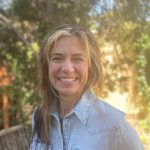This commentary was originally published in the Fall 2024 edition of PEEReview.
 As the country builds out renewable energy projects, one important area of work for us is to ensure the proper siting of renewable energy projects and their dependent infrastructure. Our goal is to ensure that renewable energy development avoids intact ecosystems and heritage sites.
As the country builds out renewable energy projects, one important area of work for us is to ensure the proper siting of renewable energy projects and their dependent infrastructure. Our goal is to ensure that renewable energy development avoids intact ecosystems and heritage sites.
That is because intact ecosystems are one of the most important tools in fighting climate change and because we believe both biodiversity and the history of land should matter when considering energy development.
We are working on renewable energy siting issues in several areas across the country.
In the West, we have formally protested the Bureau of Land Management (BLM) decision to open 31 million acres across 11 western states to solar energy development as part of an update to its 2012 Western Solar Plan. We do not oppose solar development on all public lands. Rather, we believe BLM should make changes to their plan to better protect America’s historical heritage, sensitive ecosystems, and threatened and endangered species.
In general, we are concerned that BLM is opening to solar development huge amounts of pristine, intact landscapes across remote mountain ranges, sagebrush habitats, lands with wilderness characteristics, recreational lands, dark night sky areas, and public lands important for ecotourism economies of communities in Nevada and other western states. The impacts on threatened and endangered species could be significant.
 We are also protesting the Plan’s failure to protect the integrity of the Old Spanish National Historic Trail, as mandated by the National Trails System Act and the Federal Land Policy and Management Act. This oversight represents a significant disregard for historic preservation and the statutory responsibilities of federal land management.
We are also protesting the Plan’s failure to protect the integrity of the Old Spanish National Historic Trail, as mandated by the National Trails System Act and the Federal Land Policy and Management Act. This oversight represents a significant disregard for historic preservation and the statutory responsibilities of federal land management.
We strongly believe that BLM should revise its plan to better balance its conservation and energy development mandates.
On the other side of the country, in Maine, we are opposing the state’s effort to develop Sears Island into a logistical hub for future floating o shore wind facilities. Sears Island is one of the largest undeveloped islands on the east coast. Working with federal, state and local groups, PEER has been fighting development on Sears Island for almost 30 years, and we have succeeded, so far.
What makes this latest proposal to develop Sears Island so disturbing is that there is a perfectly suitable location for this development right across the Bay, at a place called Mack Point, which has an existing port with rail access and owners willing to make the changes necessary to accommodate this new logistical hub. The economic and ecological benefits of putting this facility in a place with existing infrastructure far outweigh the benefits of putting this port on the undeveloped Sears Island.
There is hope as many businesses and groups are speaking out in support of the development at Mack Point.
However, the pressure to put clean energy development in the cheapest and easiest locations can be overwhelming. Too often, enhancing biodiversity and respecting important cultural sites takes a back seat to new development, whether it is energy development or shopping malls. When we fail to plan correctly, renewable energy projects and infrastructure will supplant the important climate-controlling work of grasslands, wetlands, and forests, and threaten sensitive ecosystems and habitat areas.
We have our work cut out for us, but these are necessary fights.
Tim Whitehouse is the Executive Director at PEER.